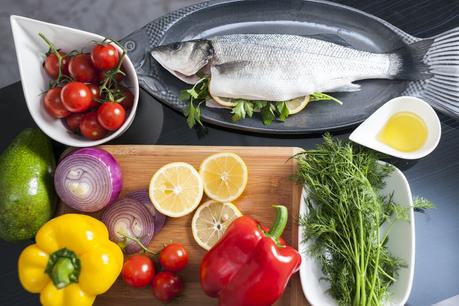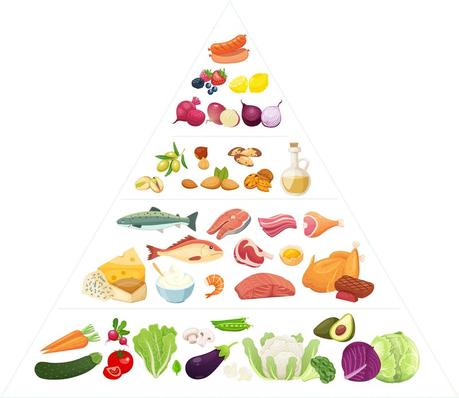Key takeaways
What do you eat on a low-carb Mediterranean diet?
If you want to lose weight or improve your blood sugar levels, consider eating a low-carb version that eliminates grains, potatoes, rice, fruit, and other higher-carb foods without sacrificing the delicious, unique flavors of Mediterranean cuisine. Learn moreWhat do you eat on a standard Mediterranean diet?
It's easy to follow. Simply load up on colorful produce, whole grains, and other plants; include a protein source at each meal; add generous amounts of olive oil to your food; and enjoy red wine in moderation, if desired. Learn moreWhat are the potential health benefits of eating a Mediterranean diet?
A Mediterranean diet is rich in fresh, minimally processed foods. Research suggests that eating this way may possibly help people improve their health. Learn more
So, what is the Mediterranean diet? Is this a flavorful way of eating healthy?
A Mediterranean diet can provide health benefits, according to researchers. And eating a low-carb Mediterranean diet may provide even more benefits when it comes to losing weight and controlling diabetes.
In this guide, you'll learn first about how to do a low-carb Mediterranean diet. We'll also show you how you can add carbs back for a more typical Mediterranean diet, at a carb level that works best for you.
Plus, you'll get tips about what to eat, along with meal plan examples for low-carb and higher carb Mediterranean diets.

Start your FREE 30-day trial!
Get instant access to healthy low-carb and keto meal plans, fast and easy recipes, weight loss advice from medical experts, and so much more. A healthier life starts now with your free trial!
Start FREE trial!
1. What is the Mediterranean diet?
The Mediterranean diet is based on the traditional cuisine of people who live in the countries bordering the Mediterranean Sea, especially Italy, Greece, and Spain.
Though Mediterranean diets vary from country to country, they share common features. For instance, they all emphasize fresh, local, minimally processed foods.
While there isn't just one type of Mediterranean diet, most include large amounts of fresh seafood, vegetables, fruits, whole grains, legumes, and olive oil.
You can easily modify a typical Mediterranean diet to make it low carb.
2. The Mediterranean diet pyramids
On a Mediterranean diet, you can enjoy a wide variety of fresh and tasty foods. Here are two food pyramids: on the right is a low-carb Mediterranean diet; on the left is a typical Mediterranean diet.

You can see that the big difference between the two is that the low-carb version does not have the bread, grains, and starchy vegetables. It also only has low-sugar fruit like berries.
In both cases, the pyramid is designed to help guide food choices with no set-in-stone rules for how much to eat. Instead, you decide how much to eat based on your hunger, weight goals, and preferences.
3. What to eat on a low-carb Mediterranean diet

A low-carb Mediterranean diet combines two popular eating patterns: carb reduction and the fresh foods found in the Mediterranean region.
Strong evidence shows that low-carb diets can help people lose weight and control blood sugar.
When eating a low-carb Mediterranean diet, you simply avoid the higher-carb foods such as bread, rice, potatoes, beets, and high-sugar fruit. (You can enjoy some of these occasionally in small quantities - and we'll talk about how to add them back in later in this guide.)
The good news is that on the low-carb Mediterranean diet, you still enjoy generous servings of delicious proteins, vegetables, and olive oil at every meal.
Foods to eat
Eat at most meals:
- Protein: Seafood, poultry, eggs, cheese, or yogurt (include fish or shellfish at least twice a week)
- Above-ground vegetables, especially leafy greens, tomatoes, bell peppers, cucumbers, squash, greens, artichokes, eggplant, and broccoli
- Olive oil, olives, nuts, or seeds
- Herbs and spices
Serving sizes
A half-cup serving of fruits or vegetables is about the size of a tennis ball
- Berries: one serving per day
Eat in smaller amounts:
- Red meat (twice per week)
- Processed or cured meat, such as ham or prosciutto (once per week)
- Below-ground vegetables like carrots or onions (up to one-half cup a few times a week)
- Legumes (up to one-half cup a few times a week)
- Lemons, limes: in small amounts for cooking or to flavor beverages
Foods to avoid:
- Whole grains found in foods, such as: bread, pasta, cereal, quinoa, and couscous, etc.
- Potatoes
- Sugar, honey, syrup
- Foods with added sugar (candy, cookies, cakes, ice cream, and other sweets)
- Foods made with white flour (bread, pasta, cereal)
- Sweetened beverages
- Fruit juice
- Fruits: bananas, grapes, and most other fruit besides berries
What to drink
Drink still or sparkling water, with a squeeze of lemon or lime. You can also enjoy coffee or tea with a splash of milk or cream.
Many people include red wine at meals as part of their Mediterranean lifestyle. If you want to drink alcohol on a low-carb Mediterranean diet, choose dry rather than sweet red wine.
Studies suggest wine may reduce some heart disease risk factors.
If you are drinking wine, aim for a daily maximum of two glasses of wine if you're a man or one glass if you're a woman.

